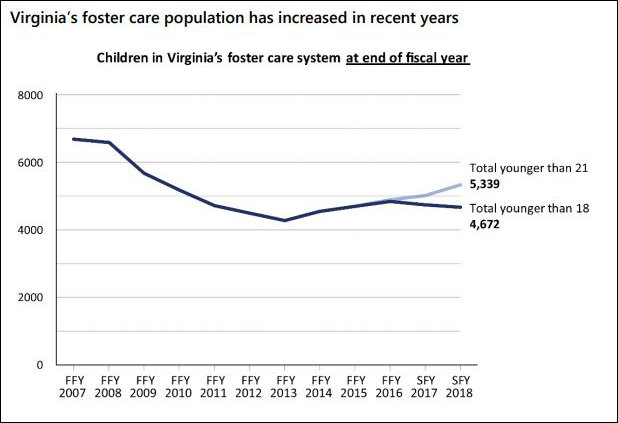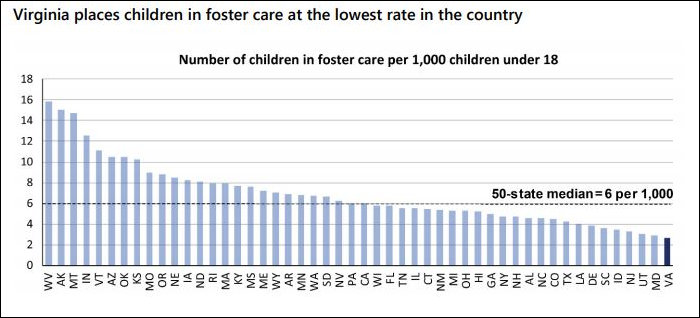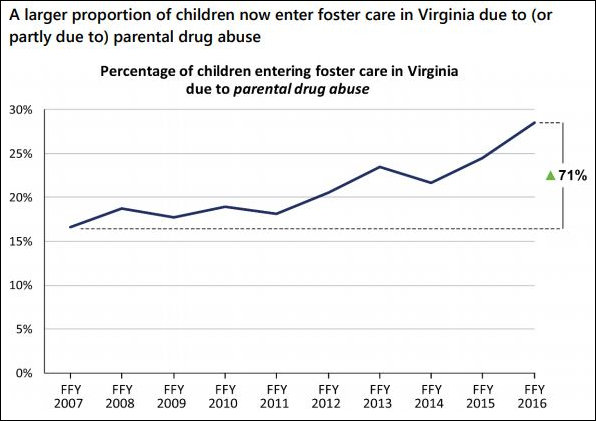
As the General Assembly ponders how to reform Virginia’s sometimes-dysfunctional foster care system, I thought it worthwhile to present some data on the stakes involved.
The number of children in the system decreased between 2007 and 2013, then ticked up again in recent years. One reason for the increase, according to the Joint Legislative Audit and Review Commission (JLARC) report, “Improving Virginia’s Foster Care System,” was the creation of the Fostering Futures program, which raised the age at which children exit foster care from 18 to 21.
At the same time, notes JLARC, Virginia has the lowest rate of foster-care placement of any state in the country. In September 2016, the proportion of children in foster care was 2.6 per 1,000 children. States JLARC: “The precise reasons for Virginia’s low rate are unclear.”
Is that lowest-in-the-country statistic an artifact of the sad reality that Virginia’s local foster care agencies are understaffed, overworked and letting needy children fall between the cracks? Or does it reflect a more hopeful reality that the Old Dominion has a lower incidence of child abuse and neglect? Sounds like a basic question that we should know the answer to.
Here’s one clue: While Virginia has the lowest rate of foster care in the country, our neighbor West Virginia has the highest — almost 16%. A significant percentage of Virginia’s population resides in ethnically and socioeconomically similar mountain counties bordering West Virginia. In terms of foster care, do they most resemble the rest of Virginia… or West Virginia?
JLARC also notes that children have been entering foster care at younger ages, and that younger children constitute a higher percentage of the foster-care population than in the past. This trend, JLARC concludes, is tied to increasing social dysfunction:
A driving factor behind both the increase in the number of children in foster care in recent years and the shift to a younger population appears to be an increase in parental drug abuse. … The increase in foster care entries due to parental drug abuse is a nationwide trend, but Virginia’s growth rate has been faster than other states.



Leave a Reply
You must be logged in to post a comment.